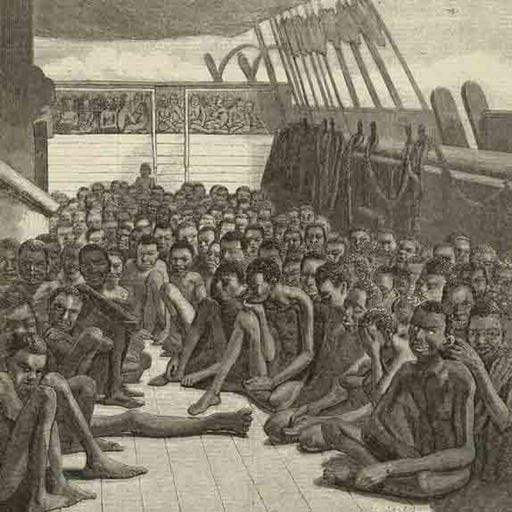Research “changes everything we think we know about American slavery”
-
Date
Wed 26 Jul 23

New research on the American slave trade should force a re-evaluation of American slavery according to an Essex historian.
American Slavers: Merchants, Mariners and the Transatlantic Commerce in Captives 1644-1865 by Professor Sean Kelley is the first book to fully explore the history of US ships that traded out of New England, enslaving 305,000 Africans and causing the deaths of at least 52,000.
“When we take into account the stories of these American slave ships it changes everything we think we know about American slavery and the transatlantic slave trade,” said Professor Kelley.
At its height in the late eighteenth century the US trade was dominated by slavers from Newport and Bristol in Rhode Island where slavery was central to the local economies.
“There is a perception that we know everything there is to know about the American slave trade but what we really know is the history of the plantation slave system that existed on US soil and slaves transported by European slavers,” said Professor Kelley, of Essex’s Department of History.
“What has been left unexplored, despite the facts existing in the records, is the history of American slavers who left the US for Africa and transported slaves largely to the Caribbean but sometimes back to the US. 305,000 Africans were enslaved in this way but their stories have not been told, before now,” he added.
Using National Archive sources from captured slave ships and American vessels transporting goods during European wars, as well as African narratives, Dr Kelley was able to fill in gaps in American documentation to create the first comprehensive exploration of the American slave trade.
Professor Kelley explained: “It forces us to re-evaluate many aspects of American slavery, such as slave rebellions. For instance, conventional wisdom is that American slavery is distinctive for not having many slave rebellions, and that they were very small, but that understanding doesn’t take into account what was happening on US slave ships. About ten per cent of slave ships experienced some sort of rebellion and in 1807, 240 people were killed when slaves detonated the Independence, killing everyone on board. This was about four times the size of the bloodiest land-based slave rebellion.
“The same goes for what we know about slave sales. The biggest American sale actually took place in Cuba when 1,200 people were sold from an American ship, a fact often forgotten in debates about slave sales,” said Professor Kelley, whose previous two books reconstructed a slave voyage from Rhode Island and explored the illegal nineteenth century slave trade.
American Slavers starts in 1644 with the voyage of the Rainbow, which heralded America’s amateurish first six decades as a slave trading nation, before exploring the rise of Newport, which became a centre of knowledge and expertise. It continues with the post-1775 period in which, despite rising moral condemnation American slavers transported more captives than ever before and established their own enclaves on the African coast. The last chapters explore how Americans like Charles Tyng relocated to Cuba and sought ever more clandestine methods during the illegal slave trade of the nineteenth century.
In two chapters Professor Kelley focuses on the many lives impacted by the American slave trade in places like Newport, home to New England’s largest black community and where slavery was so central to the economy that it shaped the lives of white Americans as much as it did those of the slaves.
.jpg?mh=500&mw=500&hash=6568B6C9CCF5290A596BEF6678B6AD0E)



